
Roots
There exists an untold story in every twist, every coil, every ripple of textured hair. It is a story not merely of biology, but of ancestry, of resilient knowledge passed through the silent testament of hands and herbs, through communal rhythm, across generations. Can modern science truly attest to the profound wisdom embedded within traditional hair care practices?
The inquiry reaches beyond laboratories and textbooks, reaching into the very core of identity. This exploration endeavors to connect elemental understanding of textured hair with the ancient practices that nurtured its strength and splendor, honoring a heritage often dismissed yet profoundly potent.

Hair’s Intricate Architecture
To comprehend the tapestry of textured hair care, one must first appreciate the biological marvel that is the strand itself. Textured hair, particularly that of Black and mixed-race lineages, exhibits a distinct anatomical signature, setting it apart from straighter counterparts. Its elliptical or flattened cross-section contributes to its characteristic curl pattern, whether it forms loose waves, defined curls, or tight coils.
The cuticle, the outermost protective layer of the hair shaft, tends to be more raised in textured hair. This raised cuticle, while offering surface area for beauty, also means a natural predisposition to moisture loss, which speaks to a unique set of care requirements.
From an ancestral perspective, this inherent dryness was not a flaw, but a given condition, addressed with intuitive brilliance. Ancient communities recognized the need for deep lubrication and protective adornment. They understood that hair, exposed to varying climates and daily life, needed a constant source of replenishment.
Modern trichology confirms this, noting that the unique molecular structure and disulfide bonds within a curly strand predispose it to greater fragility at the bends of the helix. It is here that traditional practices, rich in emollients and sealing techniques, align with contemporary scientific understanding of maintaining structural integrity.
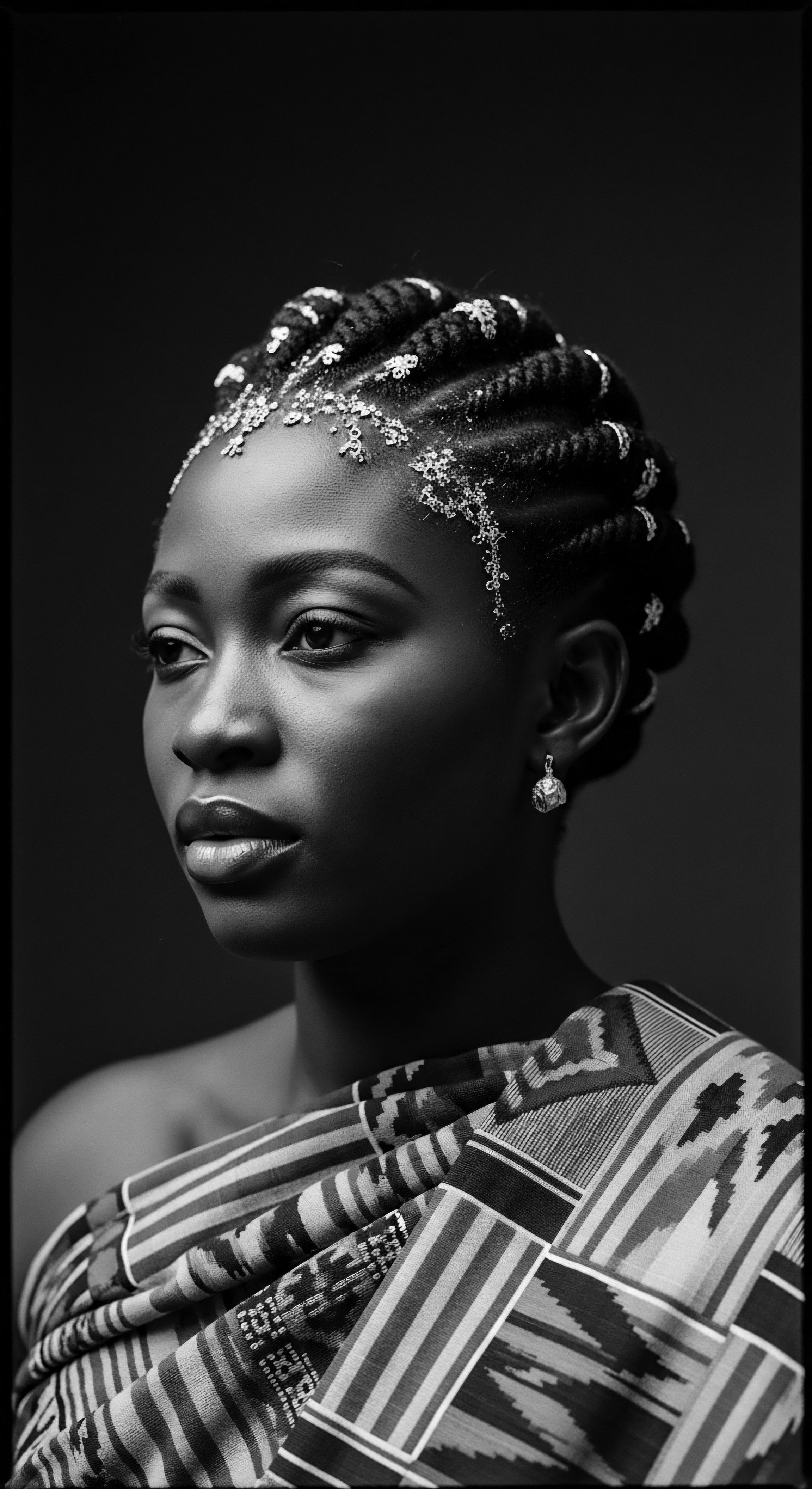
Classifying Curl Patterns Echoes of Origin
The contemporary classification systems for textured hair, often numerical (Type 3A, 4C, etc.), attempt to categorize the spectrum of curl patterns. While these systems assist in product recommendations today, their genesis holds subtle cultural undercurrents, sometimes reflecting a historical effort to systematize what was naturally diverse. Ancestrally, classification was less about a numerical chart and more about kinship, regional variation, and personal expression.
A style might signal marital status or social standing, or a particular texture might define lineage. The language used to describe hair, therefore, was steeped in lived experience and shared cultural understanding.
The concept of “good hair,” often linked to straighter textures, arose from oppressive beauty standards imposed during the transatlantic slave trade and post-emancipation eras. Enslaved Africans had their heads shaved, an act designed to strip them of cultural identity and dehumanize them. This systematic effort to erase lineage stands in stark contrast to pre-colonial African societies, where hair was revered and meticulously styled, often symbolizing deep spiritual, social, and personal meanings. The very language of hair, therefore, carries the weight of history.
The intricate biology of textured hair, with its unique structure and propensity for dryness, was understood and honored by ancient communities through practices that intuitively aligned with modern scientific principles.
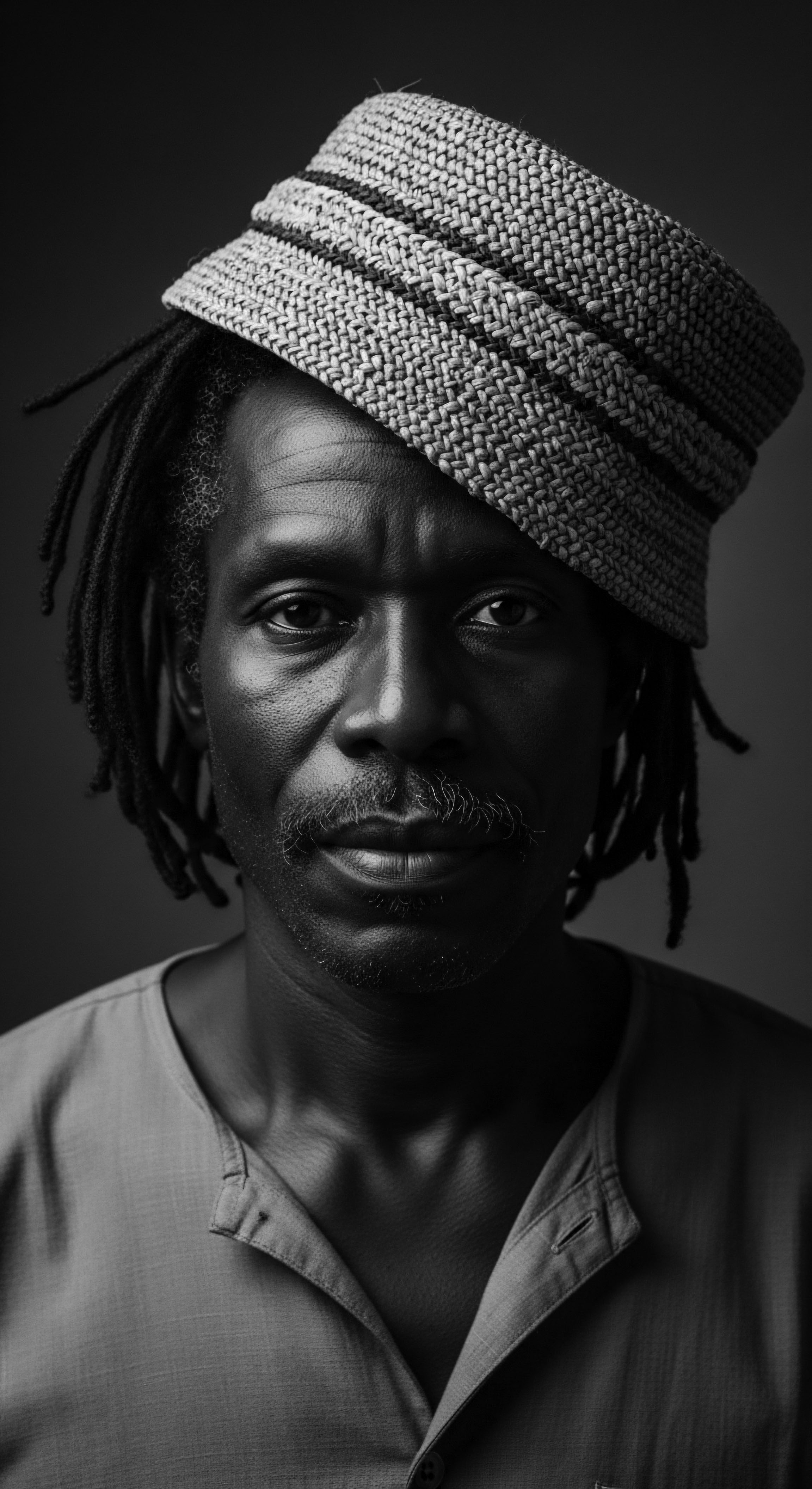
An Ancestral Lexicon of Hair
The language surrounding textured hair care is rich, drawing from diverse African and diasporic traditions. Beyond terms like “coils” or “kinks,” there exist words that carry generations of meaning, speaking to the methods, tools, and spiritual significance of hair. Consider the Yoruba term “Irun Kiko,” referring to African hair threading, a technique practiced since the 15th century for stretching and length retention.
Or the widespread reverence for “shea Butter” (often called Karité), whose use in West Africa dates back to Queen Cleopatra’s era, recognized for its profound moisturizing and protective qualities. These words are not mere labels; they are vessels of ancestral wisdom, encapsulating centuries of observation and innovation.
Traditional tools, too, hold historical weight. The Afro Comb, for instance, a tool with archaeological roots in Kush and Kemet (ancient Sudan and Egypt) dating back 5,500 to 7,000 years, served as a profound cultural artifact, adorned with symbols signifying tribal identity, rank, fertility, and spiritual connection. These were not simple grooming aids; they were extensions of self, carrying profound social and spiritual messages. The continuity of these terms and tools, though sometimes adapted or reinterpreted, speaks to an unbroken thread of heritage.

Hair’s Life Cycle and Environmental Narratives
The cyclical nature of hair growth—anagen, catagen, telogen—is a universal biological truth. However, for textured hair, environmental factors and historical circumstances have deeply shaped this journey. Ancestral communities, living in diverse climates, developed practices that optimized hair health within their specific ecological contexts.
For instance, in arid regions, a focus on heavy oils and protective styles would naturally prevail to combat dryness and sun exposure. The dietary practices of these communities, rich in nutrient-dense foods, also played an intrinsic part in overall hair vitality, a holistic understanding that extends beyond topical applications.
The forced migration during the slave trade disrupted these traditional methods, as enslaved people lost access to native ingredients, tools, and the time for elaborate communal care rituals. Despite these immense challenges, hair care ingenuity endured. Makeshift combs from found materials and the adaptation of braiding patterns for communication or escape became acts of defiance and survival. This resilience underscores the adaptability of heritage, allowing the fundamental wisdom of caring for textured hair to persevere even through the most brutal of ruptures.
- Anagen Phase ❉ The active growth period of the hair follicle, which can last for several years. Traditional diets, rich in local produce, often supported extended anagen phases, promoting greater length.
- Catagen Phase ❉ A brief transitional stage where hair growth ceases, lasting only a few weeks. Practices like gentle detangling and protective styling minimized stress during this vulnerable time.
- Telogen Phase ❉ The resting phase, typically lasting a few months, after which the hair is shed. Herbal rinses and scalp massages often characterized ancestral routines, maintaining scalp health for subsequent growth cycles.
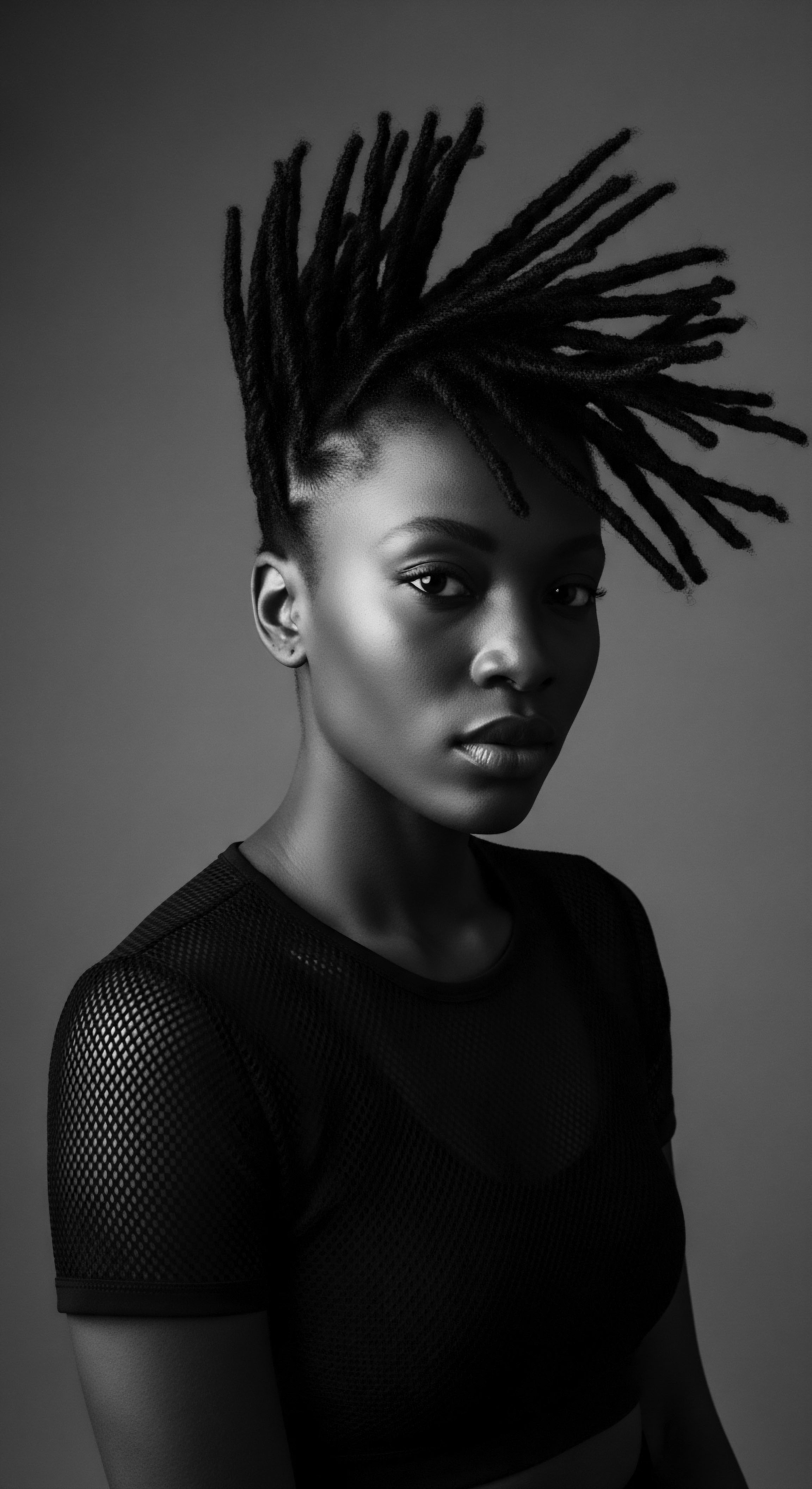
Ritual
Hair care, for generations of Black and mixed-race communities, transcended mere beautification; it was a ritual, a communal act, a quiet defiance, and a profound declaration of self. These living traditions, shaped by necessity and creativity, held deeply embedded wisdom. Can contemporary styling methods truly appreciate the layered heritage found within these timeless practices? The intersection of art and science in styling textured hair reveals a continuous dialogue between ancestral ingenuity and modern understanding.

Protective Styles ❉ An Ancestral Legacy
The vast encyclopedia of protective styles for textured hair stands as a testament to ancestral foresight. Styles like Braids, Twists, Cornrows, and Locs were not simply fashionable; they served a fundamental purpose ❉ to safeguard the delicate strands from environmental aggressors and daily manipulation, thereby reducing breakage and encouraging length retention. Ancient African civilizations, as far back as 3000 BCE, developed intricate braiding patterns that communicated status, age, and tribal affiliation. These styles were often communal creations, with women gathering to adorn each other’s heads, fostering bonds and passing on techniques that carried a lifetime of wisdom.
This traditional emphasis on protection speaks directly to modern trichology’s recommendations for minimizing mechanical stress on textured hair, which is inherently more prone to breakage due to its unique structure. The wisdom of keeping ends tucked away, minimizing daily combing, and providing a stable foundation for growth finds its ancient blueprint in these time-honored practices. The continuity of these styles, from ceremonial adornments to symbols of the Black Power movement, showcases their enduring cultural significance.

Natural Styling and Defining Texture’s Rhythm
Defining and enhancing natural curl patterns was central to many traditional hair care methods. Before the widespread introduction of chemical straighteners, communities relied on natural oils, butters, and specific techniques to achieve desired looks. Methods like coiling, shingling, and finger-twisting, still practiced today, have echoes in ancestral traditions that shaped hair with precision and care.
These techniques understood the intrinsic spring of the coil, working with it rather than against it. The historical use of plant-based gels and emollients, derived from local botanicals, speaks to an early appreciation for ingredients that provided hold and moisture without harsh chemicals.
Consider the delicate art of hair threading, known as “Irun Kiko” among the Yoruba people. This technique, where hair is wrapped tightly with cotton or wool threads, effectively stretches the hair without heat, preparing it for various styles while protecting it from damage. This traditional method foreshadows modern discussions around low-manipulation styling and heat-free stretching, demonstrating an intuitive understanding of hair mechanics long before scientific instruments could measure cuticle integrity.
| Traditional Tool/Practice Afro Comb (Ancient Kemet/Kush) |
| Ancestral Context and Use Used for detangling, styling, and as a spiritual/status symbol; often made of wood, bone, ivory. |
| Modern Scientific Parallel or Adaptation Wide-tooth comb/pick ❉ Reduces breakage on wet textured hair, preserves curl pattern. Modern materials include plastic, metal. |
| Traditional Tool/Practice Hair Threading (Yoruba "Irun Kiko") |
| Ancestral Context and Use Stretching hair without heat, protecting strands from manipulation, creating specific textures. |
| Modern Scientific Parallel or Adaptation Heatless styling techniques ❉ Bands, rollers, flexi-rods to stretch curls and prevent heat damage, promoting length retention. |
| Traditional Tool/Practice Hair Oils/Butters (e.g. Shea, Palm, Castor) |
| Ancestral Context and Use Sealing moisture, promoting shine, scalp health, used in daily rituals and ceremonial preparations. |
| Modern Scientific Parallel or Adaptation Emollients and occlusives ❉ Scientifically recognized for reducing transepidermal water loss from hair, providing lubrication and protection. |
| Traditional Tool/Practice This table illustrates the enduring relevance of ancestral tools and practices, many of which find modern validation in their functional benefits for textured hair. |

Wigs, Extensions, and Transformations
The use of wigs and hair extensions also possesses deep cultural and historical roots within Black and mixed-race communities. Far from a contemporary trend, these adornments have been used for millennia for aesthetic, ceremonial, and practical purposes. Ancient Egyptian nobility, for example, wore elaborate wigs for hygiene, protection from the sun, and to display wealth and status.
The crafting of these pieces required immense skill, passed down through generations of artisans. In some African societies, hair extensions made from natural fibers or human hair were integrated into traditional styles to add volume, length, or to create complex sculptural forms.
This historical use speaks to a foundational understanding of versatility and transformation within textured hair heritage. Modern extensions, weaves, and wigs carry this legacy forward, offering avenues for expression and protection. While the materials and manufacturing have changed, the underlying principle of enhancing or protecting one’s natural hair, or altering one’s appearance for social or personal reasons, remains a continuous thread from ancient times to the present.
Styling textured hair has always been a blend of artistic expression and protective ingenuity, with ancestral methods providing a timeless blueprint for contemporary care.
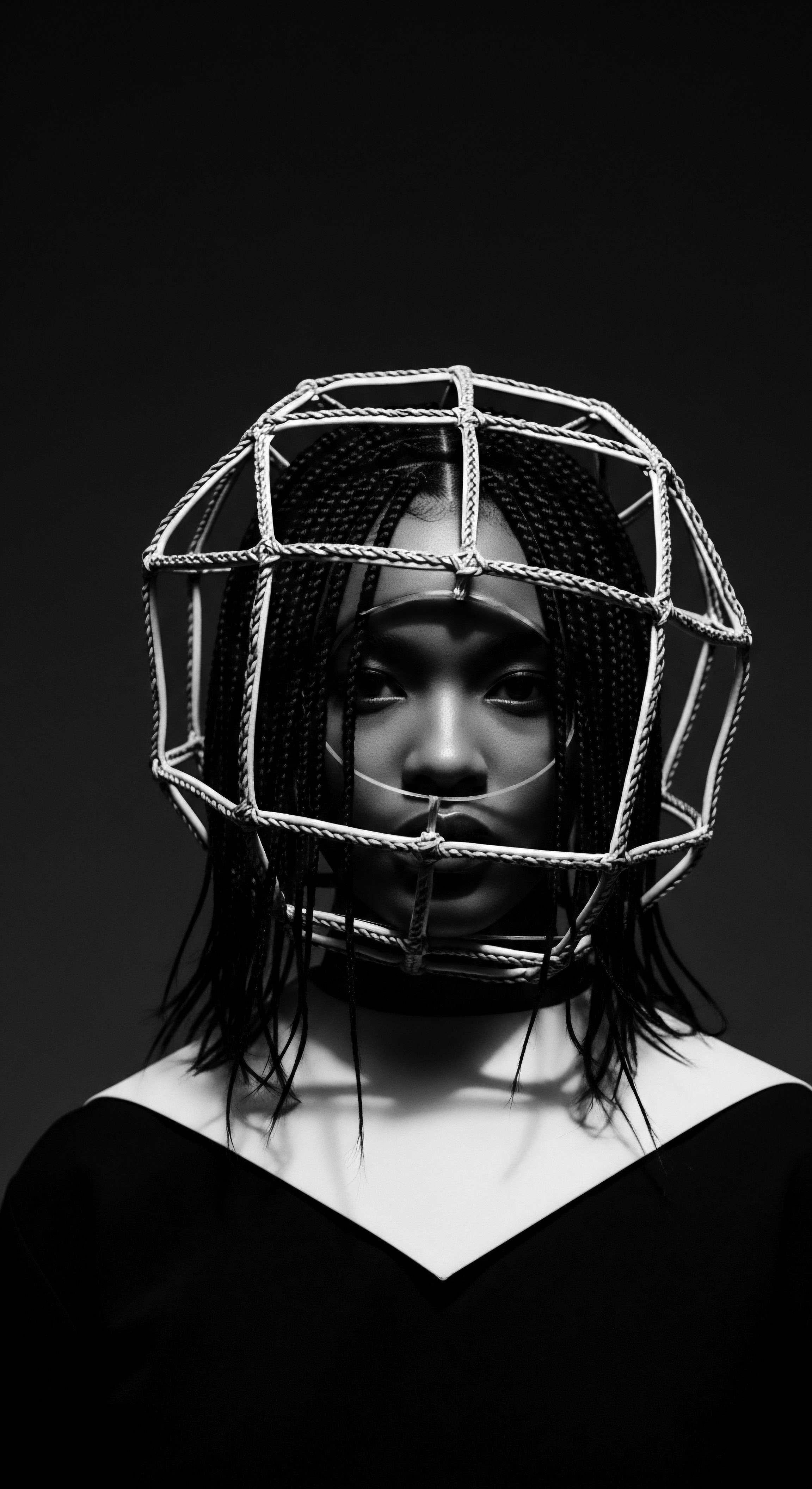
Navigating Thermal Applications ❉ A Historical Glimpse
The relationship between textured hair and heat has a complex historical narrative. While natural heat sources, like sun-drying, have always been part of human experience, the introduction of direct thermal tools, such as the hot comb in the late 19th and early 20th centuries, marked a significant shift. This innovation arose from societal pressures for Black women to conform to Eurocentric beauty standards that favored straight hair.
The hot comb allowed for temporary straightening, but often came at the cost of hair damage due to excessive heat. This period highlights a deviation from the heritage of working with the natural texture.
Modern science now quantifies the damage caused by high heat, explaining molecular changes within the hair shaft that lead to breakage and loss of elasticity. This knowledge allows for a more discerning approach to thermal reconditioning, emphasizing heat protectants, lower temperatures, and minimizing frequency. The historical experience serves as a powerful lesson, encouraging contemporary practices that prioritize hair health over fleeting conformity, thereby honoring the inherent strength and beauty of natural textures.

Relay
The true measure of traditional wisdom lies in its enduring efficacy, its ability to resonate across centuries, providing solutions that science now illuminates. Can the deep well of ancestral knowledge be truly illuminated and validated by the meticulous lens of modern scientific inquiry? The dialogue between ancient ritual and contemporary research opens profound avenues of understanding, affirming that many time-honored practices were, in fact, remarkably sound in their design.
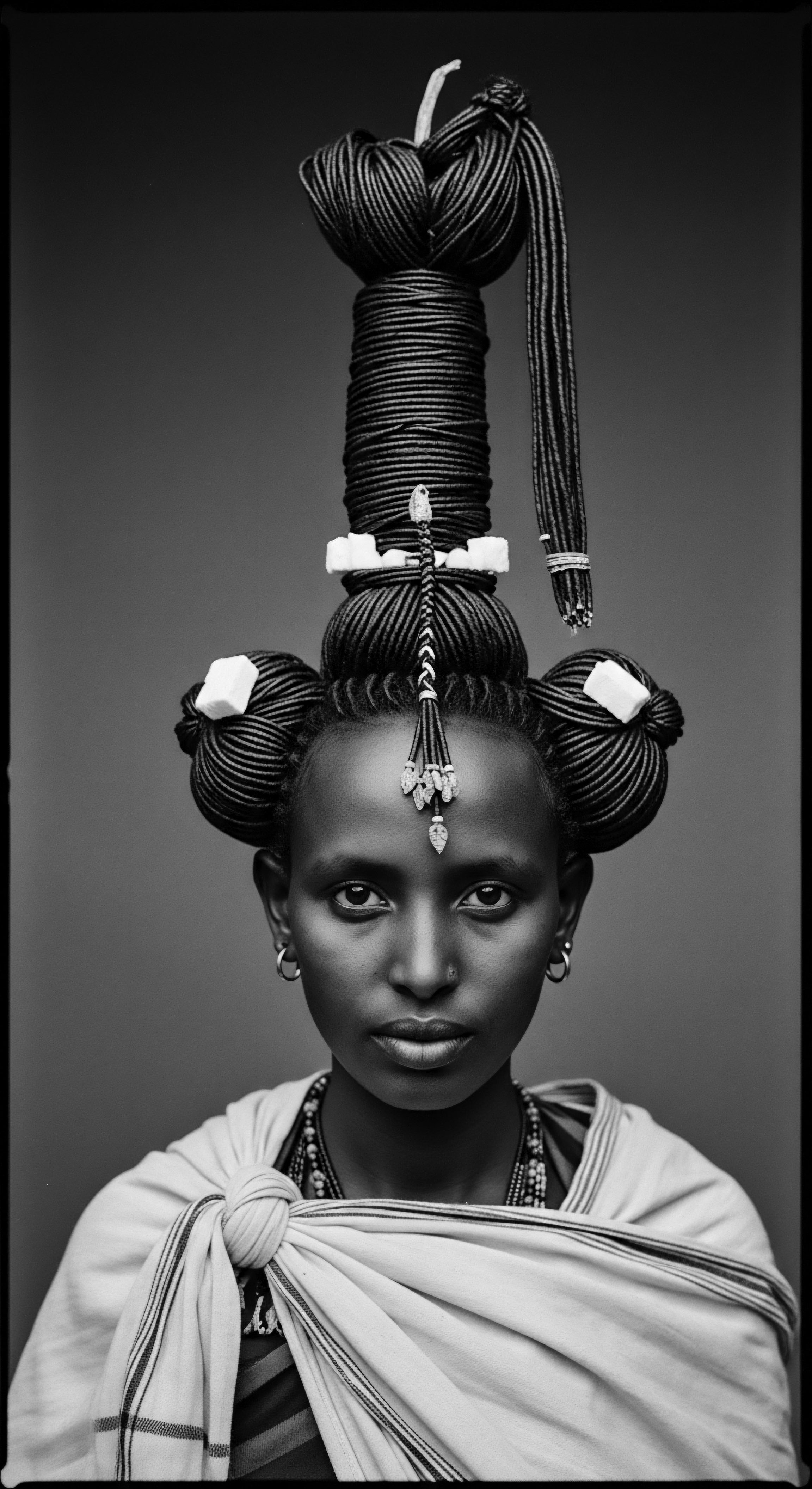
Do Ancestral Ingredients Offer Scientific Benefits?
For generations, communities across Africa and the diaspora relied on botanicals and natural substances for their hair care. These ingredients, passed down through oral traditions and lived experience, were chosen for their perceived benefits—shine, strength, moisture, growth. Modern scientific analysis has, in many instances, begun to unpack the chemical compositions of these traditional elements, revealing the mechanisms behind their efficacy.
Consider the powerful legacy of Shea Butter (Vitellaria paradoxa), often referred to as “women’s gold.” Used for thousands of years in West Africa, its historical use as a skin and hair emollient is well-documented. Science confirms shea butter’s richness in fatty acids, including oleic, stearic, linoleic, and palmitic acids, which provide exceptional moisturizing and conditioning properties. These lipids help to seal the hair cuticle, reducing moisture loss and offering a protective barrier against environmental stressors.
Furthermore, its natural content of vitamins A and E contributes to its antioxidant capabilities, safeguarding the hair and scalp from oxidative damage. The traditional practice of warming shea butter before application, for example, facilitates its penetration into the hair shaft, a principle aligned with modern understanding of product absorption.
Another compelling example is Chebe Powder, derived from the seeds of the Croton gratissimus shrub, originating from the Basara Arab women of Chad. For at least 500 years, and some oral traditions suggesting 8000 years, these women have cultivated a ritual involving Chebe to maintain their exceptionally long, strong hair. Their traditional method involves mixing the roasted and ground Chebe powder with oils or butters and applying it to the hair lengths, avoiding the scalp, then braiding it to seal in the moisture. This practice is believed to reduce breakage and promote length retention, a testament to its effectiveness in harsh desert conditions.
Recent scientific inquiry, as documented by anthropological studies at the University of Cairo and analyses at the University of Khartoum, has begun to corroborate these long-held claims. Research on Chebe powder has identified several beneficial compounds ❉ natural crystalline waxes that help seal the hair cuticle, triglycerides that penetrate the hair shaft for deeper nourishment, antioxidants that protect against environmental damage, and trace minerals that support keratin structure. This scientific validation underscores that the ancestral practice of using Chebe was not based on superstition, but on keen observation and an intuitive understanding of botanical properties that actively contributed to hair strength and resilience.
The enduring wisdom of ancestral hair care, particularly concerning natural ingredients like shea butter and Chebe powder, finds robust confirmation through modern scientific analysis of their molecular benefits.

How Does Ancestral Regimen Structure Align with Modern Hair Health Principles?
Traditional hair care regimens, often communal and time-intensive, were built on principles of cleansing, moisturizing, protecting, and nourishing. These holistic frameworks, rooted in ancestral philosophies, often paralleled what modern hair science now advocates for optimal hair health. The emphasis on gentle cleansing using natural saponins from plants, followed by deep conditioning with plant oils and butters, created a balanced ecosystem for the scalp and hair. These practices intuitively minimized stripping the hair of its natural oils, a key concern for textured hair’s moisture retention.
For instance, the consistent application of emollient-rich mixtures, as seen in the Chebe ritual, provides a continuous shield against mechanical friction and environmental factors. This aligns with modern dermatological advice for textured hair, which prioritizes moisture, low manipulation, and protective styling to prevent breakage and maintain length. The wisdom of daily oiling or buttering, so prevalent in many traditions, speaks to an innate understanding of sustained hydration—a concept critical for the optimal health of curly and coily strands.
- Cleansing Rituals ❉ Many ancestral practices utilized natural clays like Rhassoul or plant-based saponins, providing gentle cleansing without harsh chemicals.
- Moisture Infusion ❉ The widespread use of oils (e.g. coconut, olive, castor, argan) and butters (e.g. shea, cocoa) points to a deep understanding of lipid-based moisture sealing.
- Scalp Wellness ❉ Herbal rinses and scalp massages, often infused with specific botanicals, addressed inflammation and promoted circulation, fostering a healthy environment for growth.

The Nighttime Sanctuary and Bonnet Wisdom
The practice of covering hair at night, now symbolized by the ubiquity of bonnets and silk scarves, also carries a profound historical resonance, validating a simple yet powerful act of protection. Ancestrally, head coverings served multiple purposes ❉ spiritual, social, and practical. In many African cultures, headwraps were symbols of status, spirituality, or mourning. Over time, their practical use for preserving hairstyles and protecting hair at night became a crucial, inherited ritual, especially within diasporic communities where hair preservation was vital amidst challenging circumstances.
Modern science confirms the efficacy of satin and silk coverings. Unlike cotton, which can absorb moisture from the hair and create friction, silk and satin allow hair to glide smoothly, reducing tangles, breakage, and moisture loss. This simple protective measure minimizes mechanical damage during sleep, preserving the hair’s integrity and extending the life of styles. The continuity of bonnet wisdom, from its varied historical forms to its modern-day iteration, stands as a clear example of ancestral knowledge being scientifically affirmed.
The adaptation of this tradition during periods of enslavement is particularly telling. Without access to traditional tools or luxurious materials, enslaved individuals still found ways to protect their hair, often using scraps of fabric. This resilience in maintaining hair care, even under duress, further underscores the importance placed on hair health and its preservation, demonstrating an inherent understanding of its fragility. (Collins, in Born in Slavery ❉ Slave Narratives from the Federal Writers’ Project, describes how enslaved women would use cloth for hair preparation, sometimes cotton, to achieve defined curls, a practice that preserved the hair while creating style.).
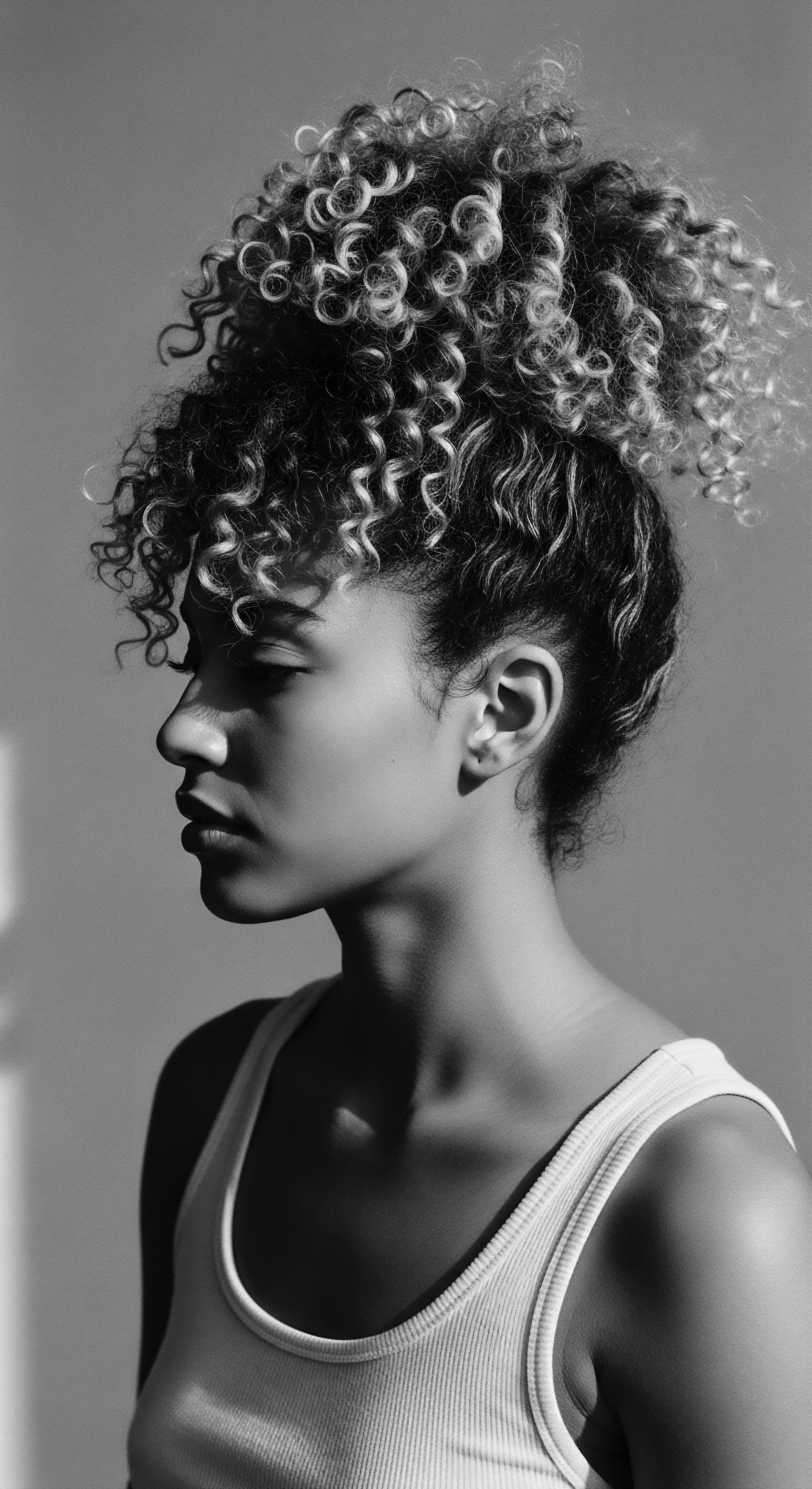
Holistic Wellness and Hair’s Interconnectedness
Ancestral wisdom often views hair not as an isolated entity, but as an integral part of holistic wellbeing, intrinsically linked to overall health and spirit. This perspective aligns with a growing body of modern research that recognizes the systemic nature of health. Nutritional deficiencies, stress, and underlying health conditions manifest in hair quality, density, and growth. Traditional wellness philosophies, which emphasized balance, mindful living, and the use of indigenous remedies for internal health, directly impacted hair vitality.
Ethnobotanical studies continue to document the broad spectrum of plant uses in traditional medicine, many of which indirectly or directly support hair health. The consistent use of specific teas, dietary practices, and even communal hair grooming rituals contributed to a sense of wellbeing that transcended the purely physical. This deep, interconnected understanding of health and beauty, passed down through generations, finds its mirror in modern integrative approaches to hair and scalp care, where nutrition, stress management, and a balanced lifestyle are increasingly acknowledged as fundamental pillars of hair health.
The journey from elemental biology to the complexities of hair growth and styling reveals a remarkable congruence between traditional practices and modern scientific insights. The validation of ancestral wisdom is not about proving its worth, for its endurance speaks volumes, but about acknowledging the depth of observation and experiential knowledge that formed its foundation. Modern science offers a language to articulate what our ancestors intuitively understood, forging a bridge between past and present that enriches our appreciation for textured hair’s heritage.
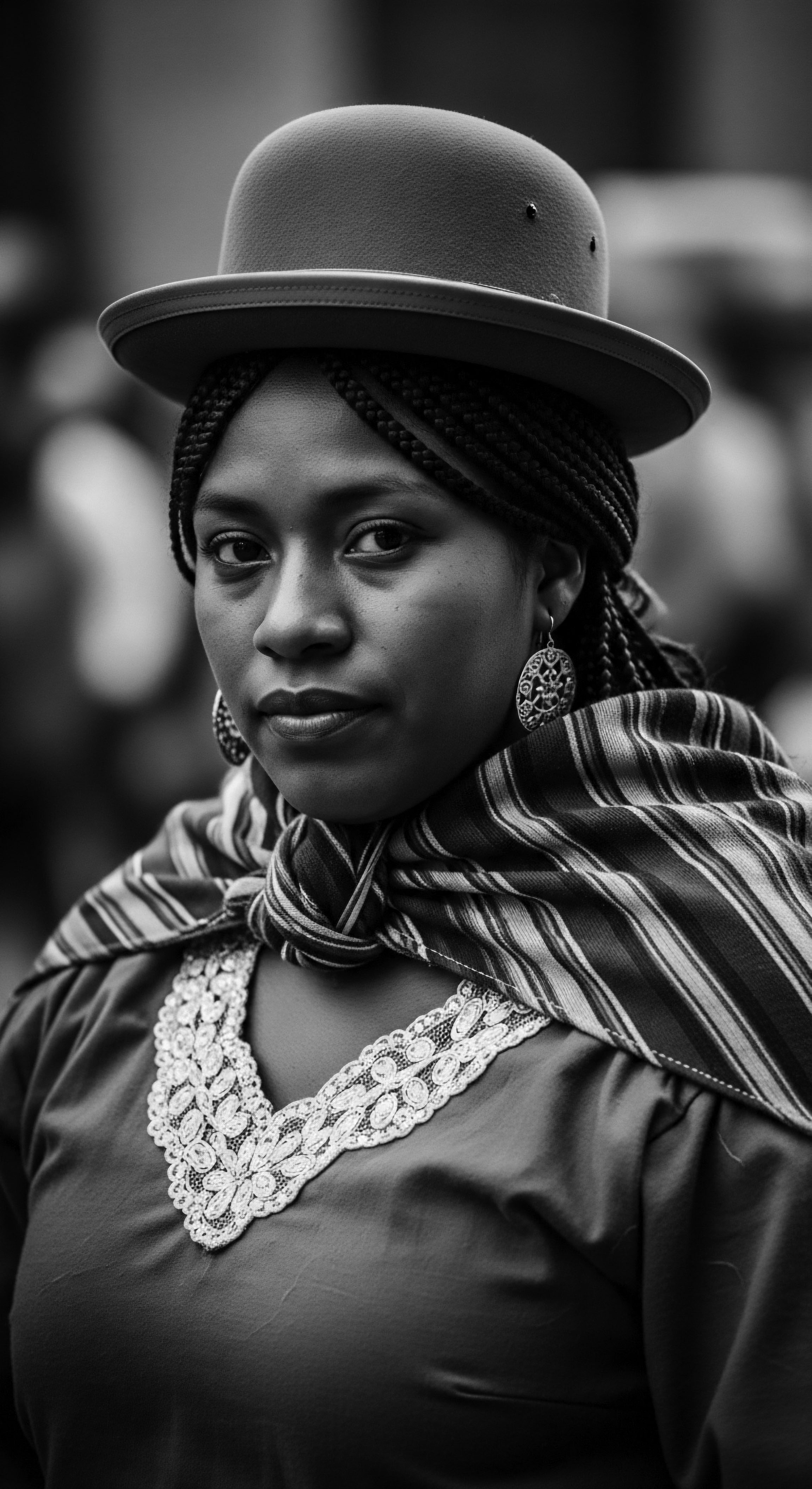
Reflection
A single strand of textured hair holds a universe of memory, a chronicle of resilience, and the whispers of generations. Our journey through the science and traditions of its care reveals a profound truth ❉ the wisdom of the past is not merely ancient, but living, breathing, and continuously verified by the analytical lens of the present. The notion that modern scientific inquiry validates ancestral practices of textured hair care is not a revolutionary idea; rather, it is a testament to the intuitive brilliance of those who came before us.
Roothea, at its very core, aims to be a living, breathing archive of textured hair’s profound heritage and its conscientious care. It stands as a testament to the fact that the efficacy of centuries-old rituals, from the protective alchemy of braids to the nourishing embrace of indigenous butters and powders, often finds its explanation in the very molecular structures and biological pathways that science explores today. This is not a process of “proving” what was already known and lived, but of deepening our understanding, offering new dimensions to a legacy that has always been inherently wise.
The practices that safeguarded hair, that celebrated its unique forms, that connected it to spiritual and social identity, were built on deep observation and sustained experience. From the ancient afro combs that were symbols of power and connection, to the persistent use of nourishing botanicals like Chebe and shea, each aspect tells a story of ingenuity. Even through periods of immense hardship and cultural suppression, the knowledge of textured hair care endured, adapting, and transforming, a silent act of resistance and self-preservation.
Looking forward, the dialogue between heritage and science allows us to honor our roots while pursuing innovative pathways. It empowers us to appreciate the enduring value of holistic approaches to wellness, recognizing that hair health is inextricably tied to our overall being and our connection to cultural lineage. The Soul of a Strand, then, is not just about the individual filament; it is about the collective memory it carries, the resilience it embodies, and the boundless possibilities it inspires as we continue to learn from the rich, inherited wisdom of textured hair.

References
- CurlyTreats. (2025). Afro comb ❉ the cultural and political legacy behind this iconic hair tool.
- Africa Rebirth. (2022). The African Tales of The Historical 7000 Year Old Afro Comb.
- Obscure Histories. (2024). Ancient Gems ❉ A Historical Survey of African Beauty Techniques.
- Our Ancestories. (2021). The Evolution of the Afro Comb.
- WholEmollient. (2025). The Forgotten Wisdom of Chebe & Qasil ❉ What Modern Hair Care Is Missing.
- Omez Beauty Products. (2024). The History and Origins of Chebe Powder for Hair Care.
- Discovering the Origins of Shea Butter. (2024). A Journey to the Heart of Africa.
- Fabulive. (N.D.). Rediscovering Historical Hair Care Practices.
- Pick Progress. (N.D.). History.
- Africnetwork. (2021). 6000 Years of Afro Comb Pick History. YouTube.
- Who What Wear. (2024). Dry, Limp Curls? This Growth-Boosting Ingredient Can Help Make Them Juicy AF.
- ER African Online Store. (2025). Unleash Your Hair Growth Potential With Chebe Powder.
- Chebeauty. (2023). How To Use Chebe Powder For Hair Growth.
- Historical Perspectives on Hair Care and Common Styling Practices in Black Women. (2025).
- International Journal of Arts and Social Science. (N.D.). Historical Roots of Makai Hairstyle of Elmina People of Ghana.
- Library of Congress. (N.D.). Heavy is the Head ❉ Evolution of African Hair in America from the 17th c. to the 20th c.
- Botanical Voyage. (2024). Africa’s Timeless Beauty Secrets.
- Stephenson. (2016). Ingredient Spotlight ❉ Shea Butter in the Personal Care Sector.
- Traveling Traditions ❉ Dominican Ethnobotany in Service of Caring for the Community. (2023).
- Plants used for hair and skin health care by local communities of Afar, Northeastern Ethiopia. (2025).
- An Ethnobotanical Study of Medicinal Plants Traditionally Used for Treatment of Hair Problems in Nuapadhi Village from Baleswar. (2024).
- African Ethnobotany in the Americas. (2012).
